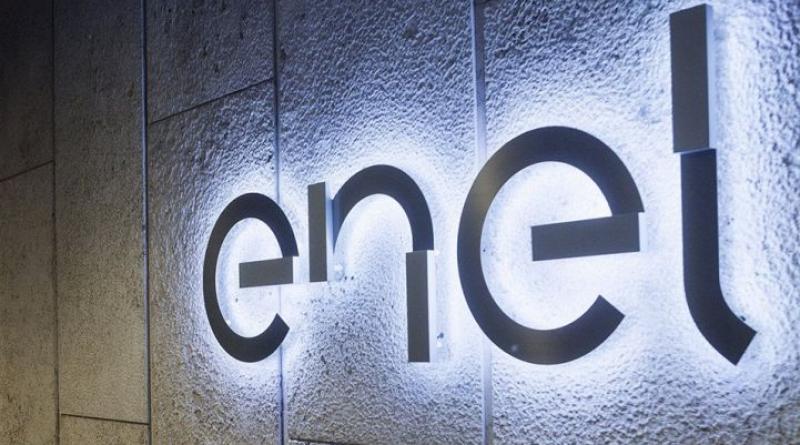Enel Reveals Plan to Add 1GW of Batteries to US Renewables Fleet by 2022.

The global renewables powerhouse will kick off its renewables-plus-storage hybrid strategy at a solar project in Texas.
Enel announced a dramatic scale-up of its U.S. energy storage ambitions on Tuesday, saying it will add 1 gigawatt of storage capacity to its renewables fleet by 2022.
That's a huge jump from late 2019, when the Italian utilities group and renewables powerhouse pledged to build another 14.1 gigawatts of renewable power capacity globally by 2022 through its Enel Green Power arm, along with 300 megawatts of energy storage from its Enel X unit.
While Enel X focuses on smaller, customer-sited batteries to help businesses with demand charges, backup power and other needs, the new 1-gigawatt commitment applies to Enel’s utility-scale renewables development business. And it kicks off in Texas, which has long lagged in energy storage development but recently has started to heat up.
“North America is very much at the forefront of Enel’s plans to roll out storage with its renewable generation fleet,” said Ryan Prescott, Enel Green Power’s head of growth strategy and energy storage development, in an interview Monday.
The strategic shift from standalone renewables to battery-paired hybrids takes advantage of falling battery costs, the federal Investment Tax Credit and wholesale market opportunities arising from the Federal Energy Regulatory Commission’s Order 841, which allows storage to compete with other power sources.
Enel will use firm battery capacity “to compete...apples-to-apples with those traditional fossil generators,” Prescott said.
Other U.S. renewables giants like NextEra Energy Resources and Invenergy also pair batteries with renewables to take on gas generators and started doing so at scale ahead of Enel. But Enel can leverage global supply chains on a larger scale than its U.S.-focused competition, Prescott said. “That can help us drive down cost in a way that sets us apart."
Enel's utility-scale storage efforts will also draw from the in-house battery energy management expertise at Enel X, which has years of experience calculating the opportunities and costs of dispatching batteries into organized markets.
Betting on Texas' energy storage market
The first entry in the battery build-out has already begun construction in Texas, for delivery by summer 2021. The Lily project, located southeast of Dallas, includes 146 megawatts of bifacial solar panels and a battery with 50 megawatts/75 megawatt-hours of storage capacity. That makes it an early adopter of the two-sided photovoltaic panels, which boost output by catching sunlight reflected off the ground.
Storage developers have had a tough time breaking into ERCOT, the competitive power market that covers most of Texas.
Big battery development to date largely banks on bilateral contracts with utility offtakers in places including Hawaii, California, Nevada and Arizona. By comparison, ERCOT lacks a capacity market, and wires utilities in the state typically aren’t allowed to build batteries, which are considered “generation.” So batteries must compete head to head with other generators in the Texas energy market, where there’s little track record of battery success — a factor that can scare away potential storage financiers.
But Enel is its own financier; the Rome-based company, which is partly owned by the Italian government, claims more than 80 gigawatts of installed generating capacity globally, more than half of that renewables including hydro. Enel has consistently been one of the largest U.S. wind developers in recent years, acquiring developer Tradewind Energy last year, and it is a growing player in large-scale solar.
“We’re a fairly strong entity from a balance-sheet perspective,” Prescott said. “We’re able to leverage that corporate strength to do things in a market with good fundamentals but maybe not as many long-term offtakes.”
A few other companies are starting to take that risk. Vistra Energy built the largest Texan battery by megawatt-hour capacity at its existing Upton 2 solar facility in 2018. It said the battery would save solar production that was getting “clipped,” or blocked from export due to interconnection limitations.
Key Capture Energy began operations of two 10-megawatt batteries in May, one on the Texas Gulf Coast and one in West Texas. Newly formed developer Broad Reach Power said it would bring online 15 batteries across Texas by the end of the year, each one capable of delivering 10 megawatts.
Nimble capacity
When Prescott sees strong fundamentals in ERCOT for a project like Lily, he’s talking about the high renewable penetration, low reserve margin and load growth, all of which create market volatility.
Lily’s battery will have an unusual power-to-energy ratio: longer duration than a typical fast-responding ancillary services battery but shorter duration than batteries fulfilling capacity obligations. The 1.5-hour duration will be enough to shift cheap solar production for the short-lived but lucrative price spikes that characterize the Texas summer season.
“The really high $9,000 per megawatt-hour price spikes are very short in duration, so it’s not necessarily the case that you need to have a very long-duration battery to take advantage of those,” Prescott said. “It was hard for us to see a justification in the [Texas] markets right now, and certainly in the foreseeable future, for a 4-hour battery to pencil out.”
Enel acquired the Lily solar development from Red River Renewable Energy, then set about adding a battery component. Besides energy arbitrage for price spikes, catching clipped solar helped the business calculus, Prescott said, as did the opportunity to hedge power price exposure for solar offtake agreements. The project also qualifies for the federal Investment Tax Credit.
gtm




